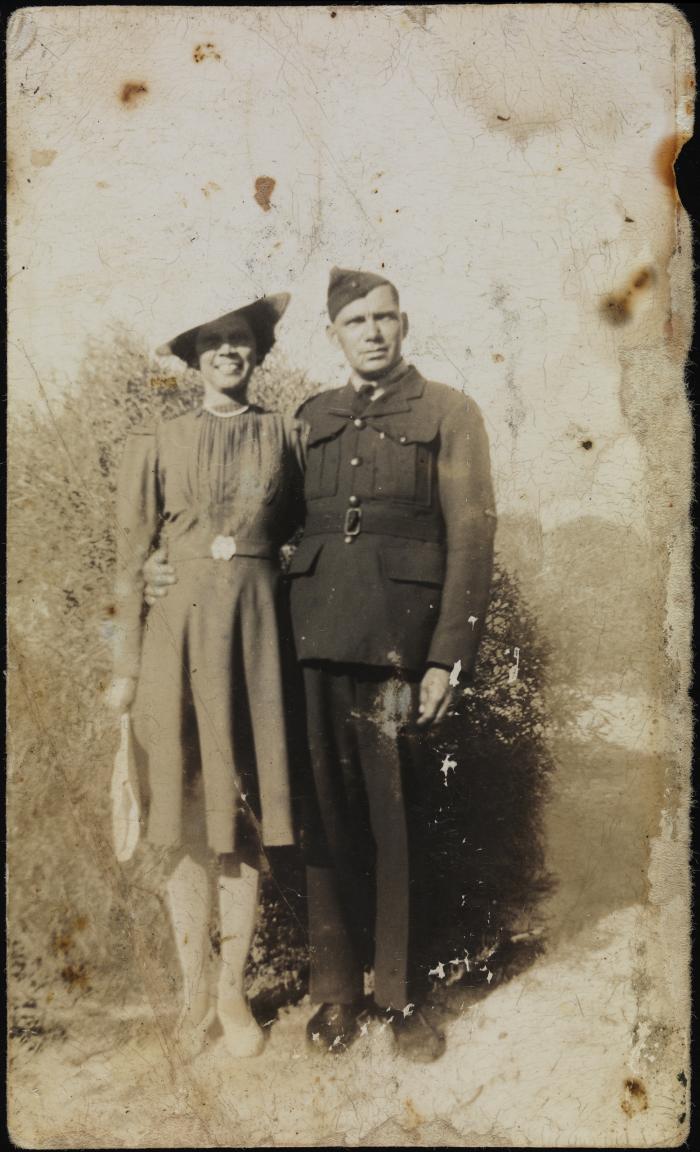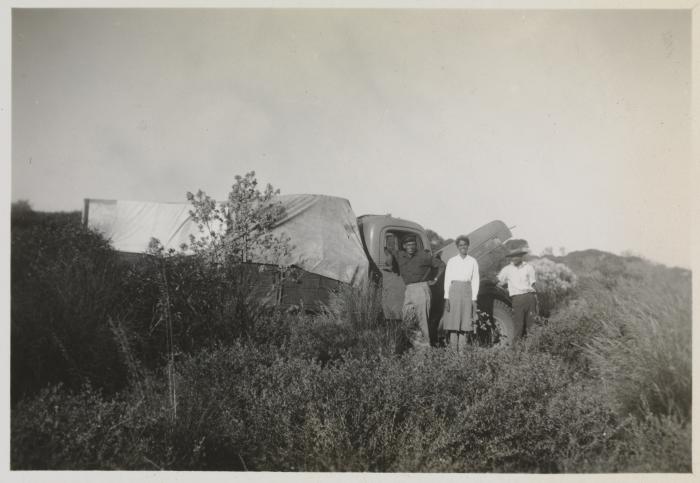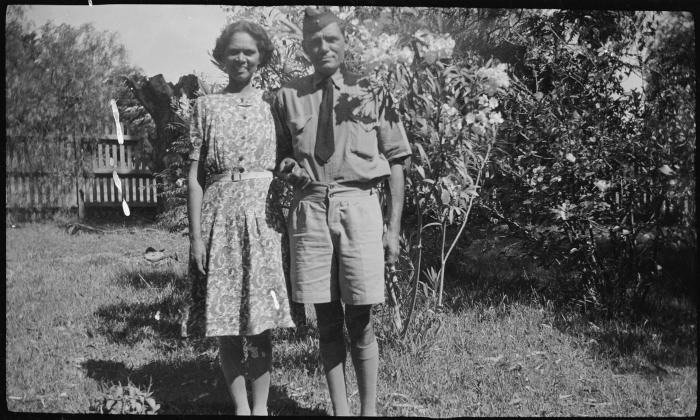Ivy and Joe Mallard
'At the beginning of the war (WWII), I was living with my husband Joe and two small sons on Carrarang Station near Browne Inlet in the Shark Bay area of Western Australia, about seven miles in from the western coastline and about 25 miles south of Steep Point.
My husband was the manager of Carrarang which was very isolated. There was no wireless or telephone and our only contact was a 6 P R who contacted us and Dirk Hartog Island once a week for messages and to give us news.
It used to take about an hour to travel on rough bush tracks from the Homestead out to the coast. We used to go fishing at Steep Point.
We were becoming increasingly worried there would be an invasion as there were planes patrolling along the coast daily. So we sent our two children down to Greenough to Boarding School as we felt they would be safer there in case of an emergency and as Joe was away from the homestead frequently.
Joe had planted petrol drums and water at intervals on the track south so I could always drive myself and any staff members, the Cook's wife etc. off the Station and south if necessary.
The planes suddenly ceased patrolling, except for every now and again one single plane would fly over.
Bush camp droving with Joe, Ivy and Vivian Mallard
Joe and I were sitting on the verandah late afternoon about dinner time, when we heard strange loud noises which were coming from the Northwest, away over the coast and across Dirk Hartog Island.
There was a lot of heavy boom booming going on, maybe for ten or fifteen minutes with flashes and flares plainly visible. There was an enormous amount of grey smoke and some was black.
Suddenly there was a huge explosion and burst of heavy black smoke going up in all directions - similar to atom bombs - with flashes and bangs. It quietened down suddenly.
We were both terrified as we watched it all and Joe said there must be a battle going on out there, and he would not be surprised if enemy planes come over and that we should get ready to leave.
Everything went quiet and we waited for the radio to contact us to hear what had been happening, but they didn't say anything about it so we didn't say anything either.
We always wondered what had happened and it was quite some time before we heard about the SYDNEY.
Ivy and Joe Mallard
In 1942 Joe joined the R.A.A.F. so we left Carrarang to live in Geraldton until he was called up and he later served in Air Sea Rescue in New Guinea.
I am pleased to be able to tell someone about this after all these years. My memory is very clear about the happenings I have described.'
The loss of HMAS Sydney II in 1941 is Australia’s greatest naval tragedy. Its disappearance following a battle with the German auxiliary cruisier Kormoran off Shark Bay in WA, left a legacy of uncertainty for decades. Almost 67 years passed until the wrecks of both ships were found, not far from one another out to sea.
You can also listen to the full interview with Ivy as part of the State Library's Oral History Collection.
Images from the Joseph Mallard collection - Part One
Reproduced with permission
Photographs | 1920-1992.
Available at Online (Call number: BA2365)
Thanks to Aboriginal History WA for their assistance.


